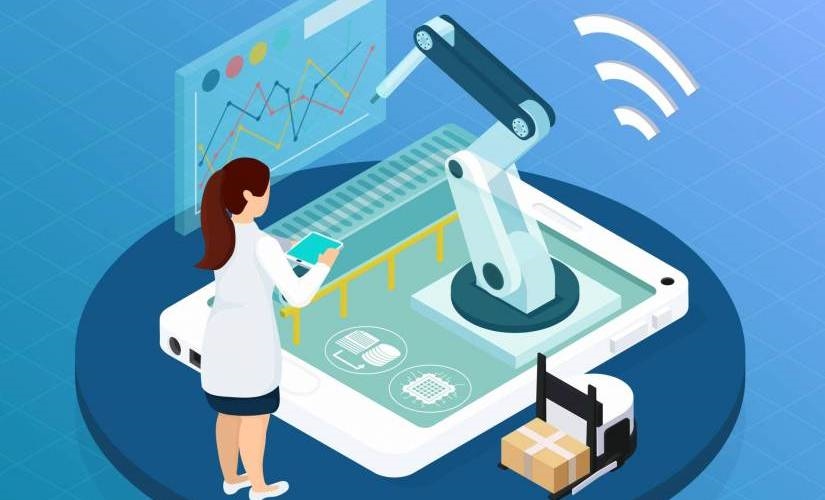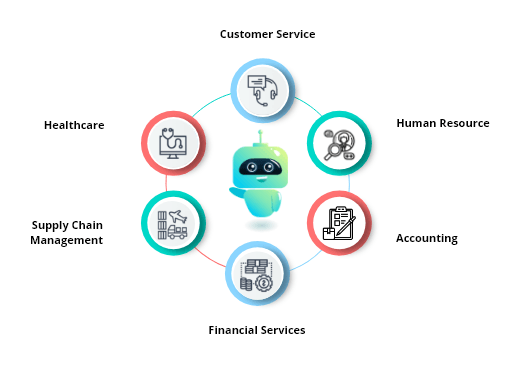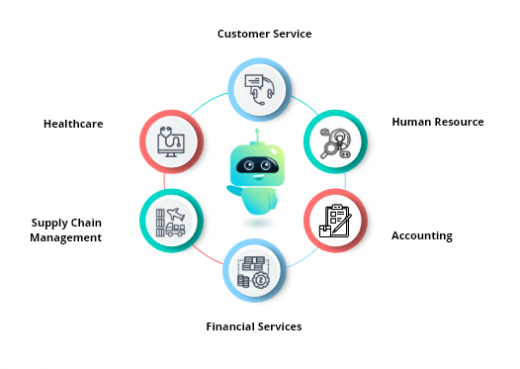The RPA Noise: The Long and Short of It
The RPA Noise: The Long and Short of It

The topic of robots and automation was initially met with hysteria not so long ago. We had reports of robots stealing human jobs and other misinformation that was making the rounds. Cut to the present day, some of the fear remains — but the technology is here — in different forms or avatars (spelled bots, RPA, chatbots). Here is the long and short of the Robotic Process Automation (RPA) noise.
RPA has not created a meteoric crater yet, but what has it really been up to?
Robots and robotic process automation have been the hotbed of discussions for quite some time now.
Much is being said about bots and all the things it can impact. There is a fundamental difference between actual bots and robotic process automation.
What is Robotic Process Automation?
Robotic process automation is a software that claims to do the same as bots did, but virtually. Imagine tiny virtual bots working your digital world like Santa’s elves.
RPA, to be exact, automates business processes, not using actual robots but the software that does the work for it digitally. RPA will undertake tasks that would otherwise consume time, leaving employees to focus on more strategic, innovative thinking needed to meet the demands of quickly evolving markets.
The terms “robotic process automation” and “artificial intelligence” are two unrelated technologies but often confused as one. RPA “does” human-like work, while AI, “thinks and discerns” like humans.” Both technologies have yet to achieve their full potential.
First, let’s ask ourselves if this, in fact, is an important dialogue. Why would processes automated with robotics have any impact on us (‘us’ here is business)?
The answer is in three words; change, efficiency, and relevance.
Change signifies the adoption of emerging technologies that businesses need, to avoid becoming obsolete. As per Deloitte, close to 78% of businesses using RPA expect to invest heavily in the technology over the next three years. This shows a redirection from reliance on manpower for day to day tasks to intelligent machine and AI.
Efficiency is more palpable when tasks are thus allocated. Let’s take the example of physical robots. When bots work in collaboration with people, in a warehouse, productivity can shoot up to 500%. Similarly, when complex tasks like data entry, documentation, etc are done by RPA, the workforce is better equipped to focus on more productive pursuits.
Relevance is the very basis of its growing application. Remember, we have long foregone normalcy. COVID- 19 has alerted businesses. Apart from the death toll and health crisis worldwide, businesses probably suffered the worst backlash. For businesses, survival became necessary.
But how would they counter the absence of their workforce? Some of the workforce are working at 50 % capacity and some at 0. RPA saved the day for many.
RPA successfully automates the financial process, back office, data entry, customer service, insurance, and human resources. RPA easily fills the gaps for skill shortage.
The demand for RPA certification will see a monumental rise in the coming days according to experts. To answer the growing demand today, we also have a million RPA software available catering to different verticals and industries. Businesses can choose from a generation of Top RPA tools.
Custom Robotic Services

The software is basking in glory because of the quick acceptance and implementation in a growing number of industries and areas within them.
Benefits and changes using RPA
Marketing: It easily undertakes marketing processes like lead nurturing, automates sales procedures, creating and delivering invoices, business intelligence reporting, customer journey tracking, etc. for example, RPA facilitates effective streamlining of digital ad positioning by up to 80%.
It beguilingly takes care of customer engagement so the marketing team can apply their energies on other tasks. The software applies AI/ML to the marketing funnel and customer experience.
Customer Service: A very recent study states that 68% of service leaders have implied that bots and VCAs will be increasingly adopted in the next two years. RPA will automate generating invoices, processing payments, automated email communication, discovering and discerning data, and processing forms, and screen-scraping, to name a few.
In some cases, RPA implementation has supplanted quicker than expected results, giving up to 15% returns on investments (ROI). The software is cost-effective, increases customer happiness quotient, offers personalized services, and optimizes resources.
Finance: More than 50% of companies are seeking out a 360-degree digital transformation of their controller operations, according to a recent Deloitte poll of close to 1,700 finance and accounting professionals.
With the sharpening dependency on RPA, companies are now able to automate more than 50 financial processes with bots becoming faster and more adaptive.
Bots can be used to automate banking tasks like KYC, loan processing and documentation, bank statements, financial planning and more.
HR: The adoption of RPA in Human Resources is relatively new but nevertheless, met with equal enthusiasm from businesses. Sierra-Cedar HR Systems Survey 2019- 2020 study states that the use of RPA tools in HR functions increased by 50 percent over the preceding year’s study.
It automates processes like talent search, employment history authentication, hiring and onboarding, payroll, absence management, etc. This, in turn, allows HR personnel to dedicate time to the actual employee and business-related issues.
RPA is all set to restructure globalization. With most businesses turning to digitalization, as becomes the pressing need (read- global pandemic), RPA has become the norm. RPA is also redefining the way we do business. A progressive technology at heart, it is not without its challenges, from creation to implementation.
Challenges
We may be experiencing the fourth industrial revolution of sorts. And digital technologies are being touted as the flag bearers. RPA is at the forefront, with the promise of the fastest growth metric in the coming decade.
What this necessitates, is a look at how well we are familiar with the system, and how far up has it come in successful adoptions. If it has, in fact, lived up to all the noise made.
We listed a few instances where RPA has seamlessly ingratiate itself with existing systems. But all hasn’t been smooth sailing for this software, nor for stakeholders involved.
The Cost Factor
Now we know that implementing RPA wasn’t so easy. Cost first. It was an expensive technology. Things are changing now, and RPA costs are scaling down with the increase in demand. But is it still simmered down enough for all budgets, and if so, at what cost?
The first issue here is, with millions of products available today, a business may find something that may fit right in with their investment budget. This would mean some compromise at the feature end. But that is the case with any software purchase today. However, RPA needs a readjustment at different levels once it is adopted.
Implementing something that may not completely answer your main issue would be detrimental rather than profitable.
The second dilemma, and the one at the core, is flagging investments. Our present economy has been hit so hard that many companies have gone steep on their investment allocation.
They are careful with risks. At a time like this, when automation is necessary but also uncertain due to its naiveté, fears control business buying decisions more than anything. This is also amplified by an acute shortage of funds.
Process Choice
One of the biggest problems businesses encounter is the decision to choose the right process to automate. Imagine the waste of resources and time if RPA is used to automating processes that do not add value to the business. This remains a common predicament.
A successful RPA initiative requires a sound business strategy, backed by sufficient finance and ongoing scaling of performance and results.
A PwC research infers that an RPA pilot project can take anything between four to six months as opposed to the projected four to six weeks. You see the substantial difference here, between RPA in theory and practice. But what governs this problem is the process choice.
Businesses need to have a strategy in place before adopting RPA. Just having RPA on board that does not reverberate through impactful business processes is meaningless.
The ultimate aim of RPA is to give you optimized efficiency. Moving tasks that took two minutes manually to 20 seconds, for instance, is a great upgrade.
Dealing with Complexities
Another essential thing about RPA is that it is not yet evolved to take upon more advanced cognitive tasks. So processes with many levels of complexities may throw your bot off.
Bots are limited by the tasks ingrained in them, created to work in a consolidated and highly systematic atmosphere. When met with unstructured elements, they do not respond. This would be like driving your sedan through the Sahara.
Higher Post Implementation Maintenance and Concerns
As much as we want to achieve autonomy over the work process through bots, having and maintaining them is another point of contention in implementing them. It is not the goose laying golden eggs. Bots on board means increased efficiency.
Of course. So we naturally gravitate towards more processes to be automated. But RPA maintenance, checking and monitoring their upkeep so work can move smoothly, can be a daunting process that may need additional consideration, time, and cost.
The bot also needs to mold as per the changing process of the business. Here your vendor needs to provide you with RPA solutions that are highly scalable and customized for your business. Though some vendors do provide a level of adaptation to such changes, the majority of the solutions available may still be fraught by limitations.
Many organizations using RPA have struggled with other issues like
- Having better control and understanding over bot behavior and how to direct them.
- RPA can still process very simple and immature operations
- Lack of better and more robust reporting capabilities
Irrespective of the drawbacks, RPA adoption continues to march forward. As it does, it will alter the fabric of business, customer engagement and behavior. We take a sneak peek into the future.
Future of RPA: The Rise of the Digital Workers
Nothing precedes or comes beyond the word of the customer. Digital economies have given heightened importance to customer experience. RPA, with its ability to deal with data management, is at the center of all data-driven decisions, and metrics that will contribute to it.
Look at retail, for example. Almost all retail processes can today be automated. For the sake of listing; back office, billing invoicing, data entry to the front office, store planning, trade promotions, etc. and it can achieve up to 98% accuracy in retails as per current studies.
RPA can overturn blocks that were existent earlier. Repeat orders, abandoned carts, loyalty program management. RPA may also be able to facilitate a direct address to consumer complaints, returns and exchanges. All of this constitutes excellent customer experience.
AI + RPA
There is a lot of talk of AI going on. The emerging technology has almost entered every business, and conjunct with other technologies to provide game-changing consumer experience, business operations, and more. RPA + AI will be the new intelligent RPA. These will be the new age “digital workers.”
Forbes predicts that in the coming years, more than 40% of enterprises will create state-of-the-art digital workers by combining AI with RPA.
They will come with advanced cognitive and analytical abilities like to act, perceive, make decisions, and make extremely calculated predictions. They will view data as “experience” and will be able to identify the emotion. This will take customer engagement to a completely different level.
Tomorrow holds the promise of newness and reinventing and countering RPA weaknesses too. A big problem that we presented here is RPA’s inflexibility. The latest research and expert talk discuss the answers in the form of low code. Low code is a joint forum for developers and businesses to manage bot behavior and accommodate readiness to change. What it will fruit, in reality, remains to be seen.
Conclusion
Our status quo with Covid -19 is supposedly the best launchpad for RPA. It provides the system to successfully permeate the market. At the same time, this urgency has become the enemy. We find RPA at a nascent stage, still evolving and advancing.
It may be able to do all and more. Many companies are still ill-prepared to progressively adopt the system. The software, however, is in a state of unfolding, adapting, and synergizing. The future is filled with endless possibilities.
The question is do we have the patience. And more importantly, can we afford the patience? Pandemic or no pandemic, technologies like RPA, AI, ensure that businesses will never be the same again.
The post The RPA Noise: The Long and Short of It appeared first on ReadWrite.
(14)


